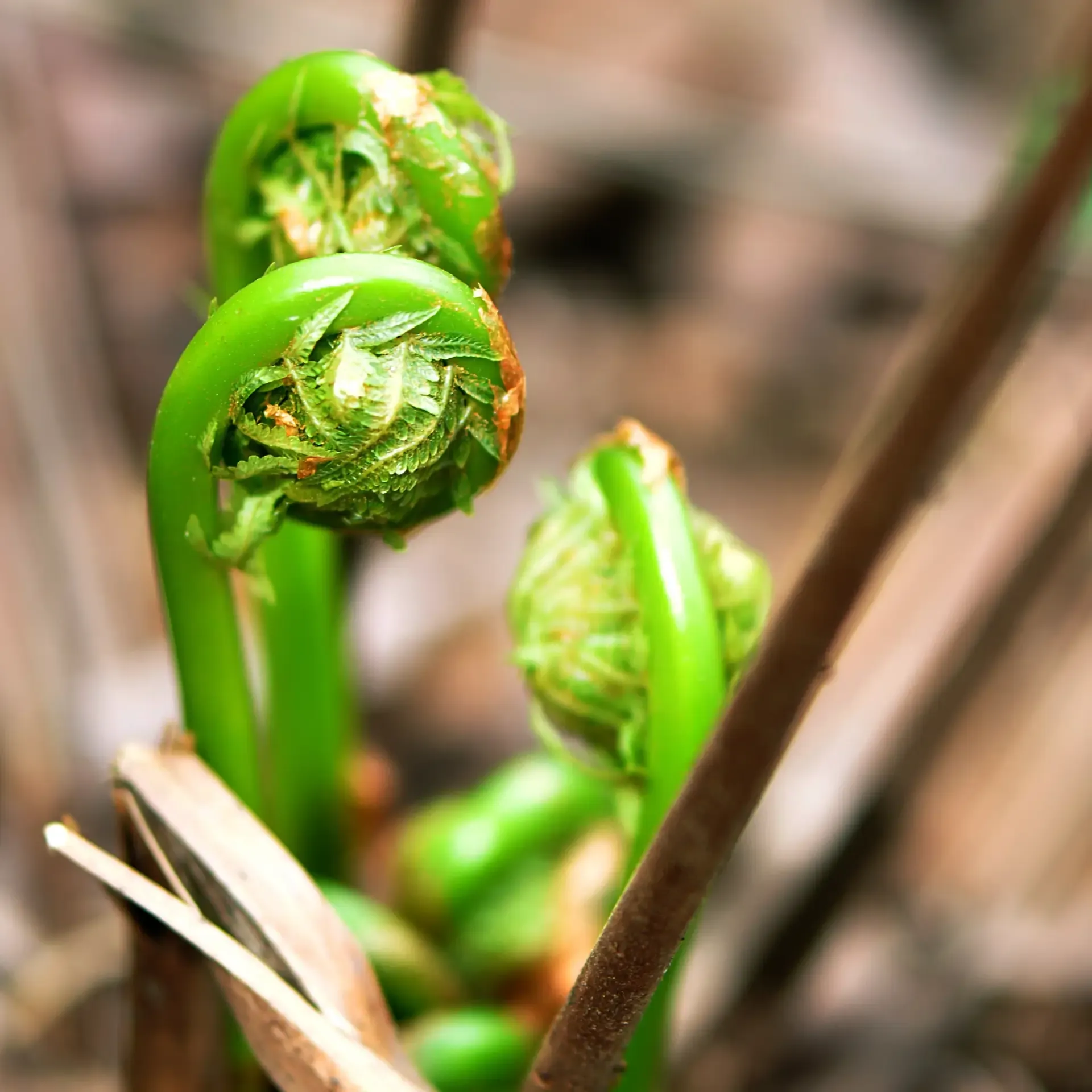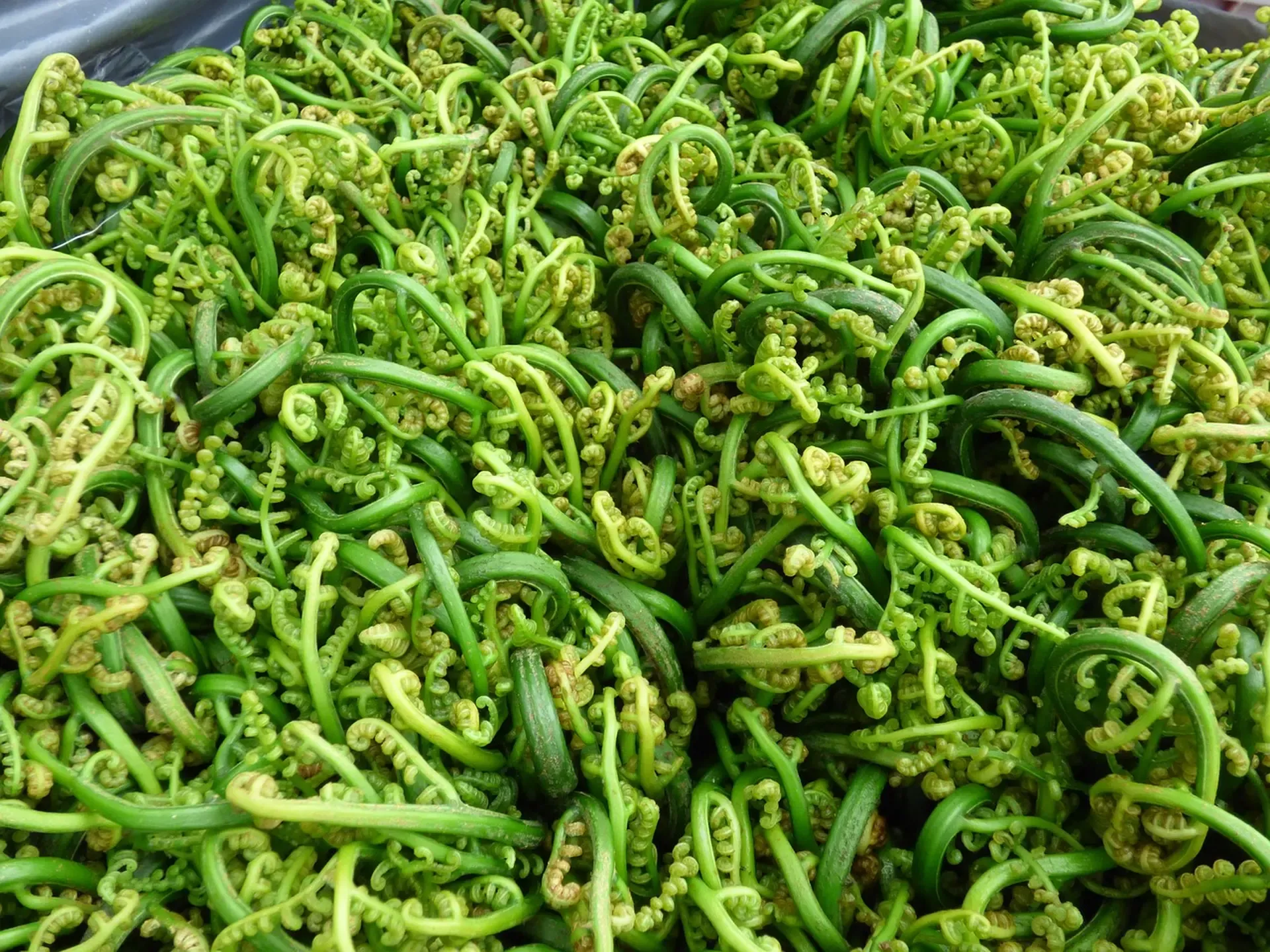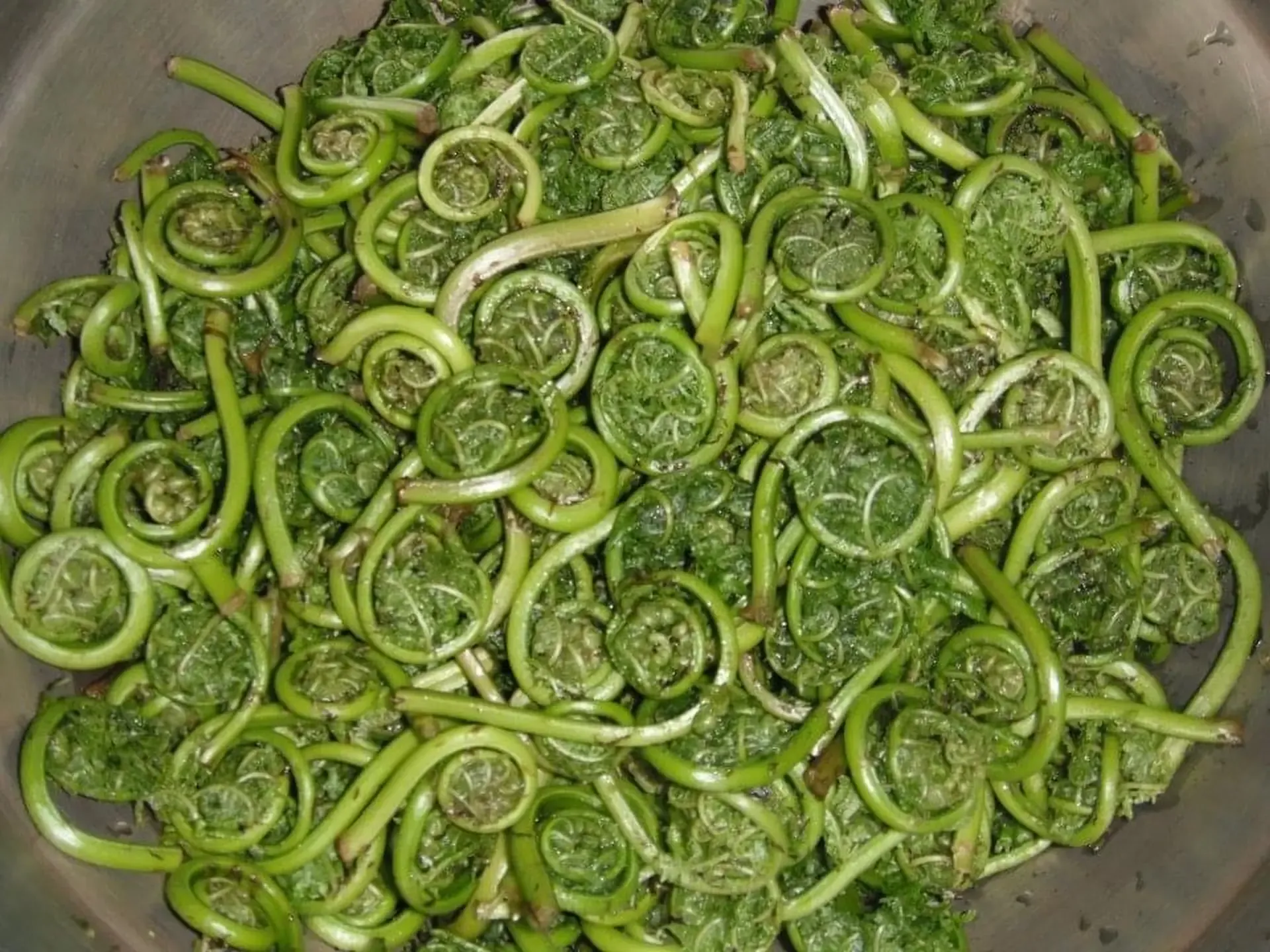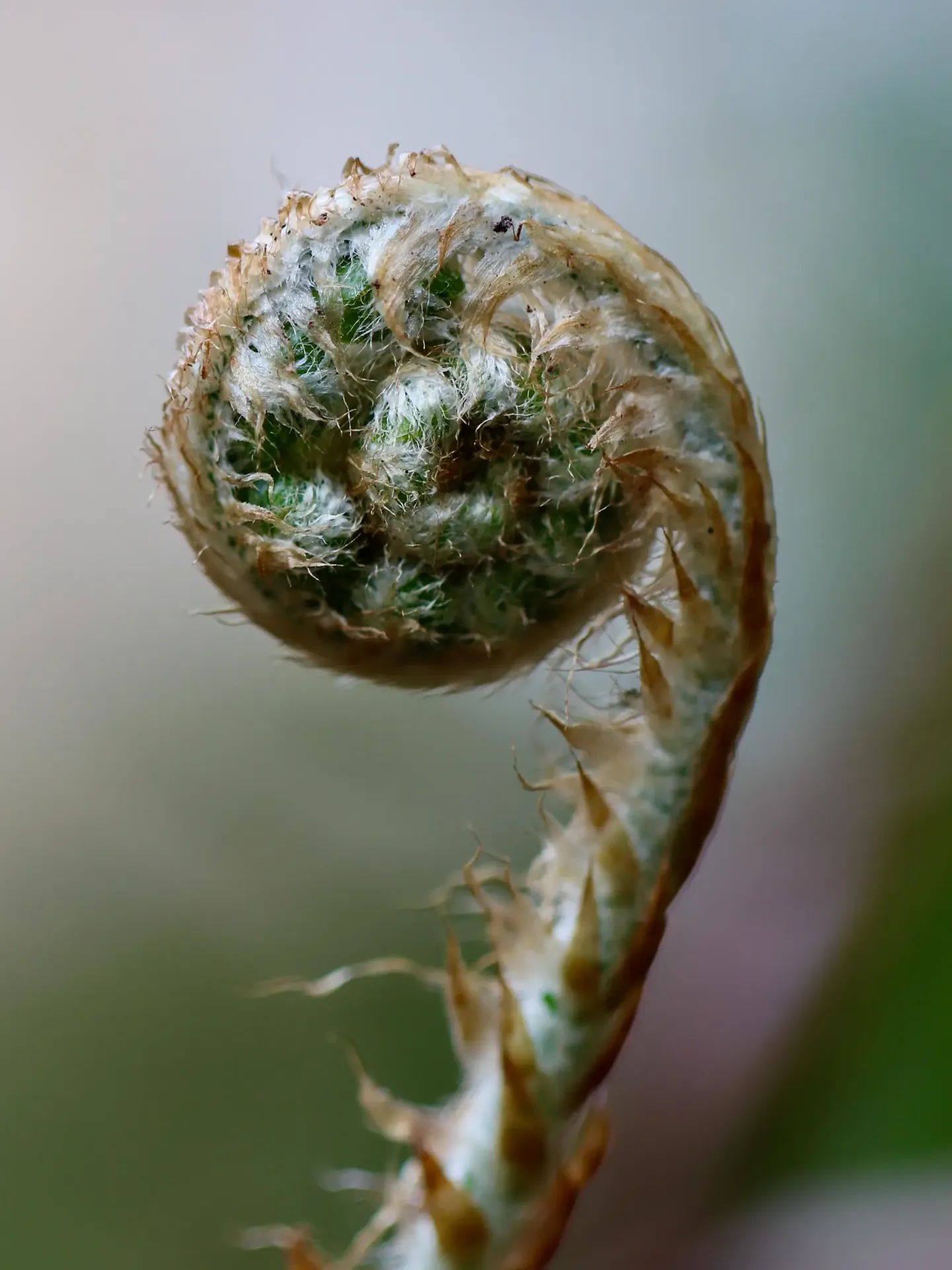Edible Wild Plants of the North Cariboo
Fiddleheads
Submitted by: Ted Traer RPF Retired
Fiddlehead Fern
| Submitted by | Ted Traer RPF Retired |
| Plant Names - Common | Fiddlehead Fern/Ostrich Fern | |
| Plant Name - Latin (Scientific) | Matteuccia struthiopteris | |
| Plant Name - Indigenous | Secwepemc | n/a |
| Dakehl | n/a | |
| Tsilhqot’in | n/a | |

| Botanical Description | A deciduous fern with bright green fronds that resemble ostrich feathers. It grows in clumps and reaches heights of 90-120 cm (35-47 in) | |
| Leaves | Fiddleheads are the young shoots of the ostrich fern and fresh ferns are only available in the spring | |
| Stems | Ostrich ferns are quite easy to spot, having two identifying characteristics. Firstly, they’ll have thin papery brown scales around the fiddleheads. This falls off as the fiddlehead unfurls. Secondly, a deep U-shaped groove is present on the inside of the otherwise smooth stem – think of the shape of a celery stalk, only smaller | |

| Flowers | n/a | |
| Seeds | Ferns reproduce through spores which are produced on the underside of mature fronds. Unlike seeds, spores do not contain an embryo and rely on external factors, such as moisture and temperature, to germinate and grow. Although fiddleheads themselves do not play a direct role in fern reproduction, their successful development into mature fronds is critical for the production and dispersal of spores | |
| Habitat and Range | They are found in northern regions worldwide, and the central/eastern part of North America. They can be found in a variety of habitats, from damp forests and riverbanks to swamps and marshes. They thrive in moist, shaded environments with rich, well-draining soil. Climate and soil conditions play a significant role in determining the success and distribution of fiddlehead fern populations | |

| Parts Used | The early shoots are commonly used as a food source. Cook fiddleheads in a generous amount of boiling water for at least 5 minutes, or steam them for 10 to 12 minutes until tender. Discard the water used for boiling or steaming the fiddleheads. Freezing considerations: Clean the fiddleheads by removing the skins. Boil them for two minutes. Discard the cooking water. Plunge the fiddleheads into cold water and drain. Pack the fiddleheads in freezer containers or bags. They are a good source of vitamins A and C, niacin and riboflavin, and are nutritionally comparable to asparagus and other common green vegetables |
|
| Harvesting Practices | The spring plant peaks in May and the sprouts are generally foraged or picked from late April to early June before the plant grows into a fern. Ideally picked when they’ve grown approximately two inches above the ground, just before or just as the fronds begin to unfurl. This happens within a few days, so the harvesting window is very small. They are best when small coils that are tightly wound up, and vibrant bright green, unless they are still covered in their brown papery skin. As the ferns mature and unfurl, they become toxic and bitter, not suitable for eating. Simply cut or snap the fiddleheads off at the crown with a sharp knife or gloved hands. Pick no more than half the amount of the plant present on the crown. Taking more than half damages the plant, sometimes even killing it. Remove its brown covering by placing the fiddleheads in a paper bag and gently shaking it or when rubbed. Purchase or pick only ostrich fern fiddleheads, as they are the safest for consumption |
|
| Special Considerations / Notes |
Health RisksA number of food borne illness outbreaks (also known as "food poisoning") from eating raw or under cooked fiddleheads have been reported in Canada and the United States since 1994. |
|

